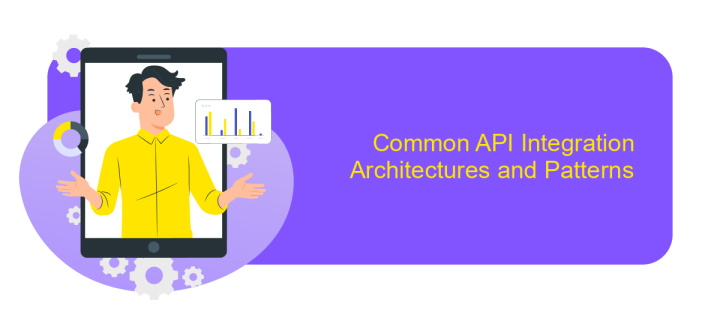What is API-based Integration
API-based integration is a powerful method that enables different software applications to communicate and share data seamlessly. By utilizing Application Programming Interfaces (APIs), businesses can streamline processes, enhance connectivity, and improve overall efficiency. This approach facilitates the exchange of information between disparate systems, allowing organizations to leverage existing technologies and create more cohesive and dynamic digital ecosystems. In this article, we explore the fundamentals and benefits of API-based integration.
Understanding API Basics
APIs, or Application Programming Interfaces, are essential tools in modern software development. They allow different software systems to communicate with each other, enabling seamless integration and data exchange. By providing a set of rules and protocols, APIs enable developers to access specific features or data of an application without exposing the entire codebase. This modular approach enhances flexibility and scalability in software design.
- Endpoint: A specific URL where an API can be accessed.
- Request: The act of asking an API to perform a specific action or retrieve data.
- Response: The data or outcome returned by an API after processing a request.
- JSON/XML: Common data formats used in API communication.
- Authentication: Methods to verify the identity of a user or system accessing the API.
Understanding these fundamental concepts is crucial for leveraging APIs effectively. They not only facilitate integration between disparate systems but also enhance the functionality of existing applications. By using APIs, developers can build more robust and interconnected solutions, ultimately delivering better user experiences. As technology continues to evolve, mastering API basics remains a valuable skill in the digital landscape.
The Role of APIs in Integration

APIs, or Application Programming Interfaces, play a crucial role in modern integration processes by enabling diverse software systems to communicate and share data seamlessly. They act as intermediaries that allow different applications to interact with each other, regardless of their underlying technologies or platforms. This capability is essential in today's digital landscape, where businesses rely on a multitude of software solutions to manage operations, customer relationships, and data analytics. By facilitating these interactions, APIs help streamline workflows, improve efficiency, and reduce the complexity associated with manual data transfers.
Moreover, APIs empower organizations to customize their integration strategies according to specific business needs. Services like ApiX-Drive simplify this process by offering a user-friendly platform to configure and manage integrations without the need for extensive coding knowledge. This democratization of integration capabilities allows businesses of all sizes to leverage the power of APIs, thereby enhancing their operational agility and scalability. By utilizing such tools, companies can focus on core activities while ensuring their software ecosystem remains interconnected and efficient.
Benefits of API-Based Integration

API-based integration is an essential component of modern digital ecosystems, enabling seamless communication between disparate systems. By utilizing APIs, businesses can streamline operations, enhance productivity, and foster innovation. This approach allows for real-time data exchange, ensuring that information is consistently up-to-date across platforms.
- Scalability: APIs allow businesses to scale their operations efficiently. As the business grows, APIs can handle increased loads without significant changes to the underlying infrastructure.
- Flexibility: With API-based integration, companies can choose the best-of-breed applications and services, tailoring their tech stack to meet specific needs without being locked into a single vendor.
- Cost-Effectiveness: By reducing the need for custom integrations and manual data entry, APIs help cut costs and minimize errors, leading to substantial savings over time.
In conclusion, API-based integration offers numerous advantages that can significantly impact a company's digital strategy. By promoting interoperability and enhancing system functionality, APIs empower businesses to innovate and adapt to changing market demands swiftly. This makes them a critical asset in achieving long-term success in a competitive landscape.
Common API Integration Architectures and Patterns

API-based integration is a cornerstone of modern software architecture, enabling disparate systems to communicate and share data seamlessly. These integrations can be implemented using various architectures and patterns that cater to different needs and complexities. Understanding these common architectures is crucial for designing robust and scalable systems.
One popular architecture is the RESTful API, which uses standard HTTP methods and is stateless, making it ideal for web services. Another is the SOAP protocol, which is more rigid but offers greater security and transaction compliance, often used in enterprise environments. These architectures allow for flexibility and adaptability in system design.
- RESTful Architecture: Utilizes HTTP methods; stateless and scalable.
- SOAP Protocol: Offers security and transaction compliance; suitable for enterprises.
- GraphQL: Provides a flexible query language; allows clients to request specific data.
- Webhooks: Event-driven pattern; enables real-time data updates.
Choosing the right API integration architecture depends on the specific requirements of your application, including security, scalability, and data complexity. By leveraging the appropriate patterns, businesses can enhance their systems' efficiency and responsiveness, ultimately delivering better user experiences.
API Integration Best Practices and Considerations
When implementing API integrations, it is crucial to prioritize security and data protection. Ensure that APIs are accessed over secure channels such as HTTPS, and employ authentication methods like OAuth to safeguard sensitive information. Regularly update and patch APIs to protect against vulnerabilities. Additionally, consider rate limiting to prevent abuse and ensure your API can handle the expected load without degrading performance.
Another key practice is to thoroughly document your APIs. Clear and comprehensive documentation facilitates smoother integration processes and reduces the likelihood of errors. Tools such as ApiX-Drive can simplify the integration process, offering user-friendly interfaces and automated workflows that minimize the need for extensive coding. Finally, always test your integrations in a controlled environment before deploying them in production to ensure they function as expected and do not disrupt existing systems.
FAQ
What is API-based integration?
How does API-based integration work?
What are the benefits of API-based integration?
What challenges might one face with API-based integration?
How can businesses implement API-based integration effectively?
Strive to take your business to the next level, achieve your goals faster and more efficiently? Apix-Drive is your reliable assistant for these tasks. An online service and application connector will help you automate key business processes and get rid of the routine. You and your employees will free up time for important core tasks. Try Apix-Drive features for free to see the effectiveness of the online connector for yourself.

